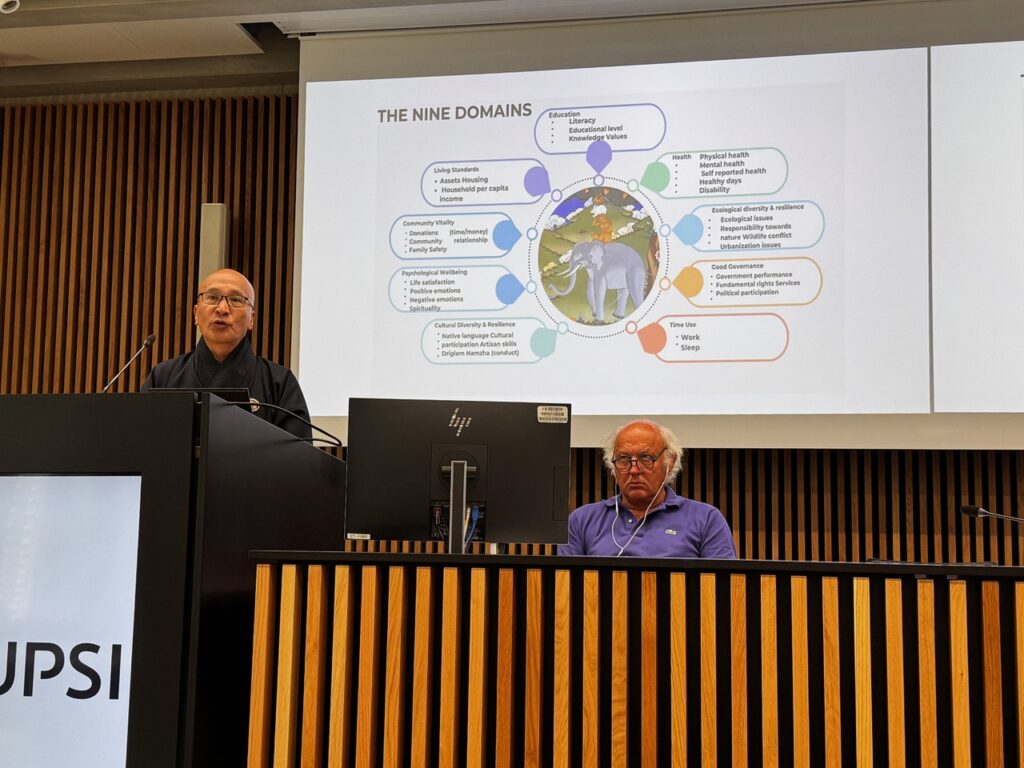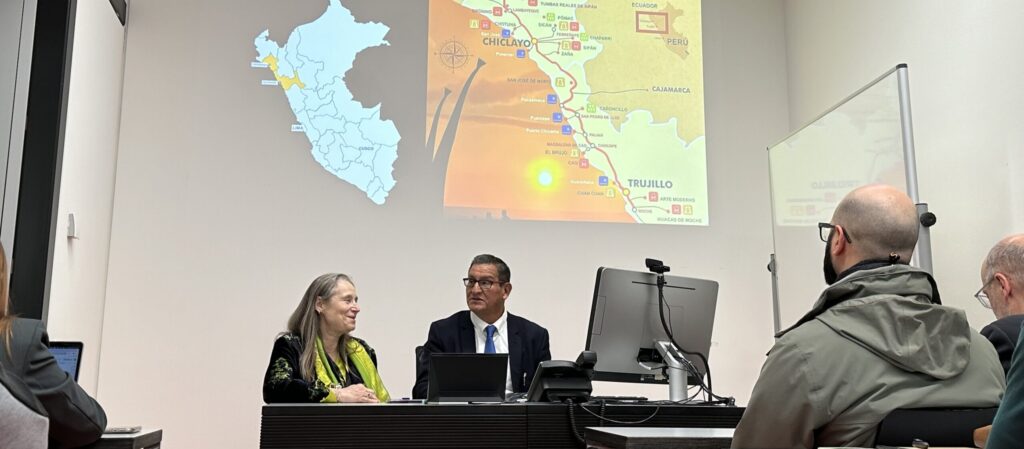If you are among those who believe that computers and information technology are the prerogative of the male part of the human species, you may stop reading this article here. Or, if you would like to overturn that view, perhaps you should continue. Yes, it is a fact that more male than female engineers and scientists populate the fascinating world of computers, networks, and information technology. But it is not because they are more apt or better fit for positions in these fields compared to women, or genetically geared for that matter. Quite the contrary, actually. The numbers of women in these domains, however, are still very low. The reasons? Manifold, starting with schooling and the way scientific subjects – namely mathematics – are taught or, more importantly, how they can made appealing to both girls and boys alike.
Despite the global efforts in the last 15 years to inspire and engage women and girls in science, currently less than 30% of researchers worldwide are women. Moreover, according to data provided by UNESCO, only 30% of all female students choose to pursue higher education in fields dedicated to so-called STEM (Science, Technology, Engineering and Mathematics). For this reason, the United Nations General Assembly on 22 December 2015 adopted a resolution to establish an annual International Day to foster full and equal access and participation of women and girls in science, as well as gender equality and women’s empowerment. In that year the priorities of the global community were being redefined and the sustainable development goals (SDGs) of the Agenda 2030, involving 193 countries, were drawn up.
On this issue, Professor Laura Pozzi comments:
«I believe there is a question of social perception, which brings many female students to avoid or not choose scientific disciplines, even when there are good at them. If we look in high school at how many girls and boys are good at maths, we see that they both have equal ability; therefore, there is definitively no gender bias in terms of performance in this basic scientific discipline. Coming to Informatics, what I would like to say to these young women is that if you are good in maths, then you will be good also in Informatics – the foundation of this discipline is, in fact, maths and logic. However, for some reason, girls often choose other areas of study. Again, it’s probably a cultural issue or a question of social perception».
At USI, with an overall student population of over 200 studying Informatics at all levels (undergraduate, graduate and post-graduate), the percentage of female students is quite low: at the Bachelor’s level it hardly reaches 10%, increasing slightly in the Master’s (around 20%). As far as faculty is concerned, there are currently only four female professors out of 30 in total.
«I would very much like this to change but nevertheless, in my career in Informatics I have never really experienced any problems of sort, despite being in a minority. The overall environment in computer science is very open-minded and sound, in my experience».
So, what can be done to enable more women to consider careers in the scientific and technology domains?
«My colleagues and I engage in activities to show and explain how our discipline caters to men and women alike. For instance, through the Nuovo Futuro initiative, which runs throughout Switzerland, we invite middle school girls on campus to learn what it means to study Informatics. On my side, to these pre-teen girls I show small games of logic and maths. We also show them our robot lab, explaining the basic principles of how we can program them, for example, to make movements. The objective is to prove to these youngsters that informatics is for anyone, boys and girls alike. And it’s fun. Then we have activities at the university itself, where my colleagues and I engage in community-building among female faculty and students. Each year, on February 11, during the International Day of Women and Girls in Science, we gather to discuss about what it means to be a woman in the field of computer science. Of course, these are women who, unlike the middle school girls, have already made their choice – nevertheless, I believe it is important that we create and foster a community, as we are still a minority. This is where the discussion around the issue of work-life balance arises, and what I find very important and relevant is that a career in Informatics bodes well for those women who wish to have a family. This is something I always mention to high-school girls, although I understand that for many of them the idea of having children is premature».
Tell us a little more about what led you to pursue a career in Informatics…
«Ever since I was very small, in elementary school, I loved mathematics. I was enrolled in a Montessori school back then, and I remember of all the wonderful colours and shapes of the material we used to understand mathematical concepts – numbers, arithmetic operations, fractions… I have always loved the logic of it all, and of course the fact that understanding math came to me rather easily was a bonus. Once I was in High School – Liceo Scientifico, of course – I spent a year in the USA as an exchange student, and there I took a programming course. It was love at first sight. Programming is kind of magic, it gives you the most amazing feeling when you have coded an algorithm to solve a problem and out comes the correct solution after hours of working on it, lost in time. While you program you are ‘in the zone’. (If you have seen the recent and lovely film “Soul” by Pixar, they show that this happens while for example playing music or doing sport. Same with programming.) Once I got back to Europe I continued my studies at the university and chose Computer Engineering, and from then I kept travelling (another great passion of mine: discovering new cultures, new places, and different ways of being) from one place to another and from one career step to the next – a PhD between Delft (NL), Bristol (UK), and the Politecnico di Milano; an R&D position at STmicroelectronics in the Silicon Valley, followed by an industrial placement at the University of California at Berkeley; a postdoc position at EPFL Lausanne; and finally a professorship position at USI in the Faculty of Informatics».
At USI, Professor Pozzi teaches courses both at the Bachelor’s and Master’s level:
«My favourite is Automata and Formal Languages, where I tell my students of the fundamental principles of computer science, and the main models of computation behind the modern computer. I love the teaching part of my job, knowing I contribute to the growing process of future computer scientists. When students sometimes reach back to me to thank me, it makes my day».
Like many faculty at USI, Laura engages in scientific research. She investigates in particular the design of Embedded Systems with a team of talented PhD students and postdocs…
«Processors that are embedded in battery-run systems, such as mobile phones or wearable medical sensors, need to be designed with several objectives in mind. In these systems, in fact, it is not solely the criteria of high performance that matters, but also low-cost and low energy consumption play an important role. Hence we investigate compromises: strategies that do not reach top-performance in any single metric, but that excel in the combination of all objectives. Having said this, I realize that this has also been an all-important principle throughout my life – as you will discover next – the principle of finding a good compromise between several different facets».
A crucial issue for women in the workplace is finding the right balance between their life at home and their career. Do you have ideas/instruments in mind in order to help achieving this balance?
«The way I see it, the main way for women to achieve a balance between home and work is that of part-time employment. What I am going to say is based on my experience, and I understand of course that there is no one-fits-all solution; but this solution has definitely fit with me, and I do believe that there are many women who would not have given up their career had they had the opportunity to work part-time, as I have. As a mother you want to be present while your kids grow up, you want to share their experiences, and to achieve that you don’t want to be in the office the entire day. On the other hand, you also don’t need to be home the entirety of the day either, and employing your intelligence and your education in the development of a successful career is so beneficial and so rewarding; such a gift when compared to what the majority of women in past generations had. So there are two halves of you, and I believe that neither should be asked to give up. By pursuing your career part-time, you can dedicate a part of your day to your kids, and a part of your day to you work. There are many myths about part-time employment which I do not believe in. Often we hear things like ‘it can only work for non-ambitious careers’, or ‘it lowers your take-home salary but you end up working the same amount’ – in my view these are both wrong. Let me share my experience to explain. I work hard and productively when the kids are at school, I shoot out of the office to pick them up and be with them when they are out of school. With this ‘system’, I have managed to walk through all the steps of my career, from postdoc to assistant professor, Associate, and now Full. You might (or even you might not) take a bit longer to get to the top, but the important thing is the compromise you are gaining: this way I am not giving up the precious time I want to dedicate to my kids, and I am also not sacrificing my right to have a career. I hope that more and more employers will give this opportunity to the several brilliant mothers who are out there».















